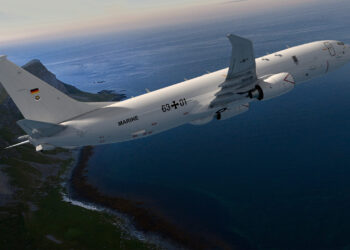US Navy,
USS RONALD REAGAN, At Sea: The ships of Carrier Strike Group (CSG) 7 commenced an undersea warfare exercise (USWEX) in the waters of the Hawaiian operating area, May 27.
Participating in the exercise are the strike group's flagship, the Nimitz-class aircraft carrier USS Ronald Reagan (CVN 76); the guided-missile cruiser USS Chancellorsville (CG 62), and the ships of Destroyer Squadron (DESRON) 7, the guided-missile destroyers USS Decatur (DDG 73), USS Gridley (DDG 101) and USS Howard (DDG 83) and the guided-missile frigate USS Thach (FFG 43). Also participating are two nuclear-powered fast attack submarines.
The exercise is the final test for the Ronald Reagan Carrier Strike Group, which deployed May 19, before it heads to the Western Pacific and 7th Fleet area of responsibility. USWEXs are held around Hawaii several times a year for commanders to assess the undersea warfare capabilities of deploying strike groups.
“This is a great opportunity to train on our own 'home field' before we head west,” said Rear Adm. James P. Wisecup, commander, Carrier Strike Group 7. “Several nations in the areas we're headed have very quiet, diesel-electric submarines that could potentially be adversaries, and it is my responsibility to prepare these Sailors to deal with that threat. The American people expect nothing less than the best-trained Navy in the world.”
Capt. William Nault, commodore of DESRON 7, explained the USWEX provides an invaluable opportunity to train his ships' crews to in a realistic, warlike scenario. “We're trying to catch, track and prosecute multiple submarines, and they're trying to find us. We also have to maintain our protection of the carrier. It is a very challenging scenario.”
Mid-frequency active sonar remains the Navy's best tool for finding and tracking these very quiet, diesel-electric submarines. The Navy, in conjunction with regulators, has developed 29 protective measures, including marine mammal monitoring and safety zones where the units either power down or shut down active sonar to minimize potential harm to marine mammals.
The exercise includes the use of mid-frequency active sonar, under restrictions imposed by the federal district court in Honolulu. Those restrictions differ from the 29 protective measures the Navy and regulators developed, and from the ones imposed by California federal courts for the strike group's recent certification exercise in Southern California.
Adm. Robert F. Willard, U.S. Pacific Fleet commander, said the 29 protective measures “apply good margins of safety against any potential for harming any animal. Anything in excess of that is unnecessary and imposes unacceptable limits on our training.”
Nonetheless, the exercise is a welcome opportunity for the strike group, because anti-submarine warfare (ASW) is the top warfighting priority for the U.S. Pacific Fleet, and is a very perishable skill that is not easily mastered.
“Great sonar operators are trained over many years, and their abilities are as much about art as science,” said Wisecup. “Trainers ashore and simulators will only get you so far; the rest is based on experience. And to get that experience you just have to go out there and practice it against a tough adversary.”
“Only in a real ocean environment against a thinking enemy can we improve our proficiency to fight submarines,” said Cmdr. David Haas, Thach commanding officer.
“USWEX is absolutely critical for my crew,” said Cmdr. Gregory Gombert, Gridley commanding officer. “It places my sonar operators and anti-submarine tacticians in an environment that mirrors the tough conditions in the 7th Fleet and 5th Fleet operating areas. Once USWEX is over, the Gridley team will be prepared for just about anything,” added Gombert.
Confidence also prevails among the strike group's watchstanders, who relish the prospect of squaring off against two of the world's most sophisticated submarines.
“I'm excited,” said Sonar Technician Surface 3rd Class Alexander Avila, a sonar operator aboard Thach. “I want to see where our sonar capabilities stand against them, as a team. I would also like to test myself to see where my strengths and weaknesses are.”
Joining the six ships in their battle against the submarines will be the helicopters of Helicopter Anti-Submarine Squadron 4 of Carrier Air Wing 14, embarked aboard Ronald Reagan, and helicopters from Helicopter Anti-Submarine Squadron Light (HSL) 49, embarked aboard Chancellorsville and Thach, HSL 43, embarked aboard Howard, and HSL 37, embarked aboard Gridley.









